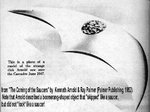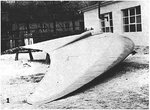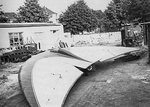- Thread starter
- #21
juanjose15
Airman
well too...just because it is in print doesnt make it true... lets find out where he got it..
Juan, ¿De dónde usted consiguió la información para su poste aquí?
Hola bobbysocks.
Después de la II Guerra Mundial Reimar fue a la universidad para continuar sus estudios, y Walter pidió trabajo en la empresa americana Northrop, (que también trabajaba en alas volantes) aunque no lo consiguió debido a la incapacidad de la empresa para trasladarlo a Estados Unidos.
Finalmente Walter permaneció en Alemania llegando a ser oficial de la Luftwaffe de la posguerra y Reimar se trasladó a Argentina, donde siguió trabajando en diseños para particulares y para el ejército argentino. Tal vez el más relevante de estos diseños sea el IA 38 "Naranjero", llamado así porque estaba pensado para transportar alimentos rápidamente.
Reimar Horten vivio en Cordoba, Argentina hasta su muerte a principios de los 90 y Walter volvió a Alemania donde murió el 9 de Diciembre de 1998 a los 85 años de edad.
Con la Revolución Libertadora de 1955 que pone fin al gobierno de Perón, también pone fin a la búsqueda de estos hermanos misteriosos. Al llegarle conocimientos del paradero de los hermanos Horten, los EEUU piden su inmediata extradición para juzgarlos por crímenes de guerra (4). En febrero de 1956 son deportados a los EEUU y no se tiene ninguna noticia más de ellos. Ese parece ser el fin de los trabajos independientes de los Hermanos Horten. A partir de ese entonces pasarían a formar parte del centro de investigación OVNI de los EEUU.
Que se sepa, se rescataron un Ho IX (229 V3) casi terminado [foto de arriba] y uno de los primeros planeadores (un Ho IV). Ambos se conservan en distintos museos de los EE UU.
After World War II Reimar went to college to continue his studies and work Walter asked the American company Northrop (who also worked on flying wings) but did not succeed due to the inability of the company to move to the United States .
Walter remained in Germany finally becoming official Luftwaffe Reimar the war and moved to Argentina, where he continued working on designs for individuals and for the Argentine army. Perhaps the most important of these designs is the IA 38 "Naranjero" so called because it was designed to deliver food quickly.
Reimar Horten lived in Cordoba, Argentina until his death in early 90's and Walter returned to Germany where he died on December 9, 1998 at 85 years of age.
















